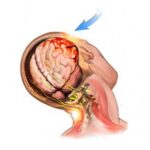 I don’t think there is any question that driving has become more dangerous over the last ten years. Drivers are driving faster, more aggressively, and certainly more distracted. Add to this the fact that traffic volumes are much higher, and you can see why driving safety experts are warning people about the new universe of roadway risk.
I don’t think there is any question that driving has become more dangerous over the last ten years. Drivers are driving faster, more aggressively, and certainly more distracted. Add to this the fact that traffic volumes are much higher, and you can see why driving safety experts are warning people about the new universe of roadway risk.
While older, more experienced drivers are better equipped to deal with this new risk, younger, less experienced drivers have become more vulnerable.
Because Missouri has done away with traditional driver education for new drivers, parents now have the responsibility of teaching their teen drivers to take a safe approach to driving. Given this, I believe the best thing parents can do is to teach their teen driver to be a “defensive driver.”
Start with the ABCs
So, how (as a parent) do you instill a safe driving approach with the children? The first thing I would emphasize is to “drive by example” and follow the ABCs. The ABCs are to always drive alert, buckled, and cautious. If you continually remind yourself and your teen driver of the ABCs, you are going to set a good foundation for defensive driving.
Alert, Buckled, Cautious = Defensive Driving
Building on the ABCs
A quick Google search will yield dozens of defensive driving tips; however, in order to build upon the ABCs, parents can benefit from a practical list of reminders that you can discuss with your teen driver. For that reason, I have whittled it down to just five key defensive driving tips to help you and your teenager stay safe out on the road.
- Keep a Careful Lookout
When driving, you should constantly be alert and focused on the road ahead of you. By scanning the road, you are more likely to be prepared should you encounter an unsafe driver, especially at intersections or highways.
Talk to your teenager about avoiding any potential hazards that they identify. For example, get over into a clear lane if you come upon an accident, or let a speeding driver pass you to avoid being tailgated or cut off.
Using mirrors and watching the road ahead can also help your teen avoid hitting someone in their blind spot or making an unsafe lane change or turn.
- Maintain a Safe Following Distance
Rear-end collisions are the most common type of collision in 2020. Most of these collisions could have easily been avoidable if the person in the trailing vehicle had left a safe amount of distance between themselves and the car ahead of them.
The rule for a safe following distance is three to four seconds. However, this rule should be further extended when driving at night when it is harder to see and much more difficult to judge distances correctly.
- Watch Your Speed
Traveling too quickly down the road can make it nearly impossible to avoid collisions, especially when traffic is heavy. We urge parents to teach their teens to be comfortable driving with slower traffic (usually the right lane) to avoid the most aggressive, dangerous drivers, who can usually be found in the left-most lanes.
It is easy for young drivers to feel forced to drive at speeds above the posted speed limit because other drivers are speeding. Have an open discussion with your teen about controlling their speed and watching out for the aggressive drivers on the road.
You should also talk to your teen about adjusting their speed based on road conditions, weather, and visibility.
- Safely Change Lanes and Turn Left
Another common reason for roadway collisions is that drivers change lanes in an unsafe, and often illegal, manner. When changing lanes, you should always use your turn signal. This alerts other drivers to your intentions. Once you have activated your turn signal, you should double-check that you won’t be merging into a lane with a vehicle already occupying the space that you need. As you change lanes, keep a steady pace. Rapidly speeding up or slowing down when you are changing lanes could very easily cause an accident.
Unsafe left turns also cause a large number of accidents. When turning left, especially at a large intersection, you need to proceed with a great deal of caution. It can be hard to see around cars in the on-coming left lane, and if you miscalculate, there could be dire consequences. Only proceed with a left turn when legal and wait until you know that nobody is coming toward you who could likely hit your vehicle.
- Beware of Other Drivers
We already know that we can no longer trust the other drivers on the road. This means that it is up to us to drive defensively to avoid car crashes. Since the driving culture keeps getting worse every year, it is up to parents to properly educate future drivers on the road’s potential dangers.
Be sure to look both ways at stoplights before proceeding into the intersection regardless of whether your light is green. According to AAA, people dying in collisions at red lights has reached a ten-year high. This number is up 30 percent since 2012. And of the people who died in these accidents, 46 percent were passengers in the vehicle, and 35 percent were the drivers who ran the light.
Fortunately, we can teach our teen drivers how to be safe behind the wheel, which may lead to a new standard of driving in the United States.
Learn more about teen driver safety with the other blogs in this series:
Drive By Example: Show Your Teens How to Drive Safely
Teen Driver Safety: Protect Your Teen from a Car Crash
Why So Many People Aren’t Wearing Seat Belts
Why Glove Boxing the Phone Is the Best Example a Parent Can Set






